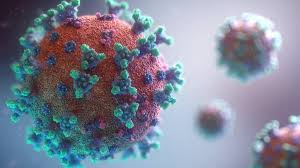
Understanding Stomach Flu Symptoms and Their Impact
Surviving Stomach Flu: Symptoms, Tips, and Remedies
Are you feeling queasy? You might be experiencing the stomach flu. Also known as viral gastroenteritis, this common illness can bring about nausea, vomiting, and diarrhea, disrupting your day. Let’s delve into what causes it, its symptoms, and how to manage it effectively.

The stomach flu, also known as viral gastroenteritis, is a common illness that affects millions of people worldwide each year. Despite its name, it’s not caused by the influenza virus but by several different viruses, most commonly norovirus and rotavirus. While usually not life-threatening, it can be incredibly unpleasant and disruptive. We’ll now explore the symptoms, treatment options, and prevention strategies for dealing with the stomach flu.
The main culprits of the Stomach Flu
Norovirus
Noroviruses are a group of viruses that belong to the Caliciviridae family.
Caliciviridae is another family of viruses that infect a wide range of hosts, including humans, mammals, birds, reptiles, and fish. The name “Caliciviridae” is derived from the Latin word “calix,” meaning “goblet” or “chalice,” due to the characteristic cup-shaped depressions, or “calices,” on the surface of the virus particles.
Caliciviruses have a single-stranded RNA genome enclosed within a protein capsid. They are known for their stability in the environment and their ability to resist various disinfectants. Within the Caliciviridae family, there are five genera: Norovirus, Sapovirus, Vesivirus, Lagovirus, and Nebovirus. Noroviruses and sapoviruses are the genera most commonly associated with human illness, causing gastroenteritis or “stomach flu.”
Noroviruses, in particular, are notorious for causing outbreaks of gastroenteritis in various settings, including cruise ships, schools, nursing homes, and restaurants. They are highly contagious and can spread rapidly through contaminated food, water, surfaces, and person-to-person contact. Sapoviruses, although less common, also contribute to cases of gastroenteritis, particularly in young children and immunocompromised individuals.
Norovirus is a highly contagious virus that is a common cause of gastroenteritis, often referred to as the stomach flu. Noroviruses are found in the stool and vomit of infected individuals and can spread easily through contaminated food, water, surfaces, and close contact with infected individuals. While the exact origins of norovirus are not fully understood, they are believed to have evolved through genetic changes and adaptations over time. Noroviruses can infect humans and animals, with different strains affecting different species.
Norovirus infections typically lead to symptoms such as nausea, vomiting, diarrhea, abdominal pain, and fever. While most people recover within a few days with supportive care, the virus can be particularly severe in young children, older adults, and individuals with weakened immune systems. Practicing good hygiene, such as frequent handwashing, and avoiding contact with infected individuals are crucial for preventing the spread of norovirus.
Rotavirus
Rotavirus is a double-stranded RNA virus that belongs to the Reoviridae family. Reoviridae is a family of viruses that primarily infect vertebrates, including humans, mammals, birds, reptiles, and fish. The name “Reoviridae” stands for “respiratory enteric orphan viruses,” reflecting the initial discovery of these viruses in the respiratory and gastrointestinal tracts and the fact that they were initially not associated with any specific diseases.
Rotavirus is a leading cause of severe diarrhea in infants and young children worldwide, responsible for millions of cases of gastroenteritis and hundreds of thousands of deaths annually, particularly in developing countries. Rotavirus is highly contagious and primarily spreads through the fecal-oral route, typically via contaminated hands, objects, or surfaces. The virus can also be transmitted through respiratory droplets. Rotavirus strains are classified into various genotypes based on their genetic composition, with different strains circulating in different parts of the world.
It spreads through the fecal-oral route, often via contaminated hands, objects, or surfaces. Rotavirus infections can lead to symptoms such as severe diarrhea, vomiting, fever, and abdominal pain. Dehydration is a significant concern, especially in young children, and can lead to serious complications if not treated promptly. Vaccination against rotavirus is available and recommended for infants to help prevent severe cases of gastroenteritis caused by this virus. Additionally, practicing good hygiene and sanitation can help reduce the risk of rotavirus transmission.
Symptoms of the stomach flu

The symptoms can vary from person to person but typically include:
- Nausea and vomiting: One of the hallmark symptoms of the stomach flu is persistent nausea that can lead to vomiting. This can be particularly debilitating and make it difficult to keep any food or liquids down.
- Diarrhea: Watery diarrhea is another common symptom, often occurring alongside nausea and vomiting. Dehydration can quickly become a concern with prolonged diarrhea.
- Abdominal cramps: Many people with the stomach flu experience abdominal cramps or pain, which can range from mild to severe.
- Fever: A low-grade fever is also common with the stomach flu, though not everyone will experience this symptom.
- Body aches: Some individuals may experience muscle aches and fatigue, similar to those associated with the flu.
Treatment for the stomach flu
Treatment for the stomach flu is primarily supportive and aimed at relieving symptoms while the body fights off the infection. Here are some strategies to consider:
- Stay hydrated: It’s crucial to drink plenty of fluids to replace those lost through vomiting and diarrhea. Clear liquids like water, electrolyte solutions, and broth are good options. Avoid caffeine and alcohol, as they can worsen dehydration.
- Rest: Resting allows your body to focus its energy on fighting off the virus. Take it easy and give yourself permission to rest as much as needed.
- Dietary adjustments: While you’re experiencing symptoms, stick to bland, easy-to-digest foods like crackers, toast, bananas, and rice. Avoid spicy, fatty, or overly seasoned foods, which can irritate the stomach.
- Over-the-counter medications: Medications like antiemetics (to control nausea and vomiting) and antidiarrheals can provide relief from symptoms. However, it’s essential to use these medications cautiously and only under the guidance of a healthcare professional.
- Seek medical attention if necessary: In severe cases, especially if dehydration becomes a concern or symptoms persist for more than a few days, it’s essential to seek medical attention. Children, older adults, and individuals with weakened immune systems are particularly vulnerable and may require medical intervention sooner.
Prevention of the stomach flu:

Preventing the spread is key to minimizing its impact. Here are some preventive measures to consider:
- Practice good hygiene: Wash your hands frequently with soap and water, especially after using the bathroom, changing diapers, and before eating or preparing food. Hand sanitizer can be used when soap and water are not available.
- Clean and disinfect: Disinfect frequently touched surfaces, such as doorknobs, countertops, and bathroom fixtures, regularly. This can help prevent the spread of viruses that cause gastroenteritis.
- Avoid close contact with sick individuals: If someone in your household is sick with the stomach flu, try to minimize close contact with them to reduce the risk of spreading the virus.
- Stay home when sick: If you’re experiencing symptoms of the stomach flu, it’s essential to stay home from work, school, or other activities until you’re no longer contagious. This helps prevent the spread of the virus to others.
- Vaccination: In the case of rotavirus, vaccination is available and recommended for infants to help prevent severe cases of gastroenteritis caused by this virus.
The stomach flu can be a miserable experience, but with proper care and precautions, most people can recover fully within a few days to a week. By understanding the symptoms, knowing how to treat them, and taking steps to prevent the spread of the virus, you can help protect yourself and others from this common illness. If you have concerns about your symptoms or are at increased risk of complications, don’t hesitate to seek guidance from a healthcare professional. Stay hydrated, rest up, and be diligent about hygiene to keep the stomach flu at bay.
Disclaimer: The information provided in this content is for general informational purposes only. It is not intended as medical or healthcare advice, diagnosis, or treatment. Always seek the advice of a qualified healthcare professional with any questions you may have regarding a medical condition or healthcare decisions.

